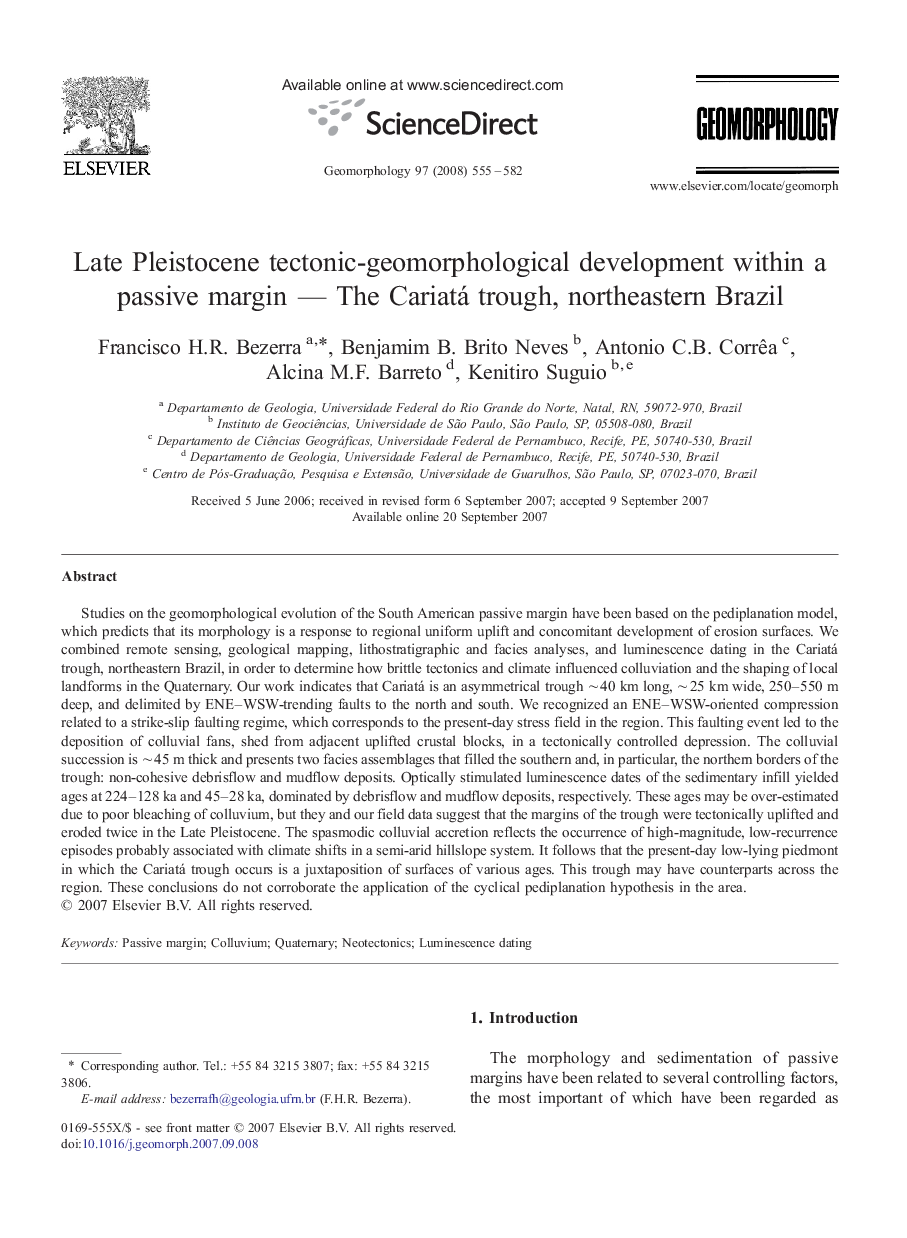| کد مقاله | کد نشریه | سال انتشار | مقاله انگلیسی | نسخه تمام متن |
|---|---|---|---|---|
| 4686797 | 1635558 | 2008 | 28 صفحه PDF | دانلود رایگان |

Studies on the geomorphological evolution of the South American passive margin have been based on the pediplanation model, which predicts that its morphology is a response to regional uniform uplift and concomitant development of erosion surfaces. We combined remote sensing, geological mapping, lithostratigraphic and facies analyses, and luminescence dating in the Cariatá trough, northeastern Brazil, in order to determine how brittle tectonics and climate influenced colluviation and the shaping of local landforms in the Quaternary. Our work indicates that Cariatá is an asymmetrical trough ∼ 40 km long, ∼ 25 km wide, 250–550 m deep, and delimited by ENE–WSW-trending faults to the north and south. We recognized an ENE–WSW-oriented compression related to a strike-slip faulting regime, which corresponds to the present-day stress field in the region. This faulting event led to the deposition of colluvial fans, shed from adjacent uplifted crustal blocks, in a tectonically controlled depression. The colluvial succession is ∼ 45 m thick and presents two facies assemblages that filled the southern and, in particular, the northern borders of the trough: non-cohesive debrisflow and mudflow deposits. Optically stimulated luminescence dates of the sedimentary infill yielded ages at 224–128 ka and 45–28 ka, dominated by debrisflow and mudflow deposits, respectively. These ages may be over-estimated due to poor bleaching of colluvium, but they and our field data suggest that the margins of the trough were tectonically uplifted and eroded twice in the Late Pleistocene. The spasmodic colluvial accretion reflects the occurrence of high-magnitude, low-recurrence episodes probably associated with climate shifts in a semi-arid hillslope system. It follows that the present-day low-lying piedmont in which the Cariatá trough occurs is a juxtaposition of surfaces of various ages. This trough may have counterparts across the region. These conclusions do not corroborate the application of the cyclical pediplanation hypothesis in the area.
Journal: Geomorphology - Volume 97, Issues 3–4, 15 May 2008, Pages 555–582